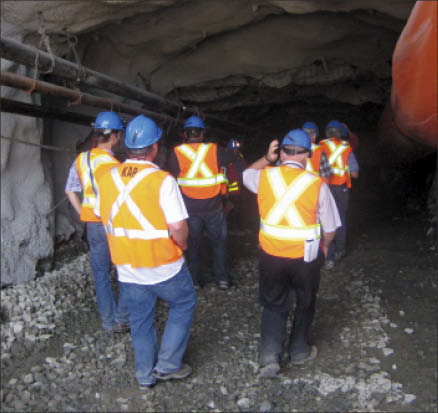Trelawney Mining and Exploration (TRR-V) has raised expectations in a short period of time. So much so that the latest drill results, that would be the envy of many junior gold explorers, failed to impact the company’s stock value.
The recent drill results from Trelawney’s Cote Lake deposit on the Chester gold project, which sits between Timmins, and Sudbury, Ont., was highlighted by hole 40 grading 1.02 grams gold over 334.4 metres, including 229.4 metres of 1.32 grams gold.
Other notable intercepts came from hole 37 which returned 125.2 metres of 0.69 gram gold and hole 38 which returned 28.1 metres of 1.16 grams gold.
But in Toronto on Jan. 5 – the day the results were released – Trelawney shares were off 10¢ to $2.79 on 1 million shares traded. The company’s shares have traded between 45¢ and $3.13 over the last 52 weeks, and it has 93.2 million shares outstanding for a market cap of $270 million.
Trelawney most recently grabbed the market’s attention with an intercept of 520.3 metres of 1.44 grams gold. That assay was released on Nov. 16, 2010, and sent its shares up 37% to a high of $2.60.
And while the most recent results are not as eye-popping, they are significant in that they show continuation of the deposit to the southwest.
“The grades and size of the mineralized intervals encountered to date within the Cote Lake deposit continue to demonstrate the large size of the mineralized system and its open-pit potential,” Greg Gibson, Trelawney’s president and chief executive, said in a statement.
The star hole of the group, hole 40, was drilled as a 100-metre step-out to the southwest and mineralization started at a vertical depth of 180 metres.
Trelawney plans to drill more on the section to determine the extent of mineralization both up and downdip as part of its winter 2011 drill program which will use five diamond drill rigs.
The Cote Lake deposit has both gold and copper mineralization which is associated with brecciated intermediate to felsic, and locally mafic intrusive rocks. The property sits at the southeastern tip of the Swayze Archean greenstone belt and is interpreted to be a southwestern extension of the Abitibi greenstone belt to the northwest.
Trelawney says mineralization occurs in the form of disseminated and fracture-controlled sulphides which generally correlate to the gold values. Visible gold is commonly observed. The zones are bleached with the prevalent alteration being feldspathic, chloritic and biotitic. The nature of the alteration and mineralization is indicative of a porphyry-style of mineralization.


Be the first to comment on "More long intercepts for Trelawney (February 07, 2011)"